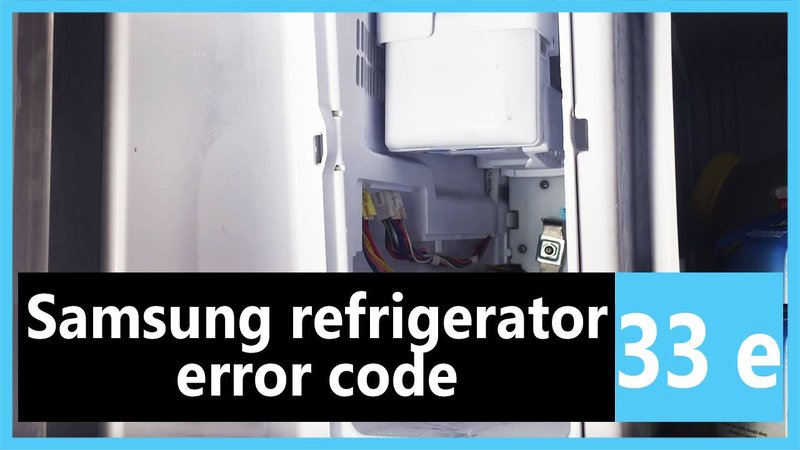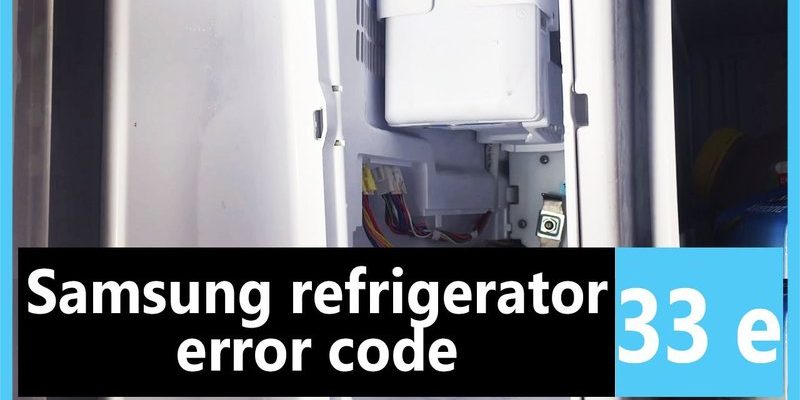
So, what exactly does this HE error mean? At its core, this code is your refrigerator’s way of telling you there’s a heating issue. But hold on, a heating issue in a refrigerator? That seems counterintuitive, right? Well, here’s the deal: refrigerators don’t just cool; they also have components that require heating for processes like defrosting. When something goes awry in this heating mechanism, the HE code pops up to get your attention.
Understanding the HE Code: What’s Really Happening?
When you see the HE code, it usually relates to the defrost system in your refrigerator. Imagine your refrigerator as a well-oiled machine where each part has a critical role — one of these roles is managing frost. The defrost system is like a mini heater inside your fridge that melts away any frost build-up. Just as you wouldn’t want a layer of ice on your car windshield, you don’t want it inside your fridge either.
Now, the HE code signifies that there might be something wrong with this defrosting process. This might sound complex, but think of it like this: when your refrigerator’s defrosting system fails, it can’t properly manage frost, leading to potential cooling issues. If your fridge can’t defrost appropriately, it can result in icy blockages that interfere with other components, like the fan, causing the code to appear.
The defrost heater, the defrost thermostat, and the defrost timer or control board are the key players in this process. If any of these are faulty, your refrigerator will struggle to maintain its inner balance, signaling its distress with the HE code. But don’t stress too much; understanding these components is half the battle to solving the problem.
Common Culprits: Why the HE Code Appears
Let’s dive deeper into why this code appears. First up is the defrost heater. Think of this as your fridge’s personal little space heater. If it stops working, frost starts to overstay its welcome, causing a chain reaction of issues. The defrost heater is essential because it helps prevent frost from taking over and ensures everything runs smoothly. When it fails, the HE error is your fridge’s way of waving a red flag.
Next, there’s the defrost thermostat. Picture it as a watchful guardian that ensures the heater only works when needed. When this component fails, the heater might not activate when it should, resulting in those frosty build-ups. This imbalance can trick your refrigerator into thinking all is well temperature-wise when it’s not, leading to that pesky error code.
Lastly, the control board or defrost timer might be the sneaky culprit. These components manage when the defrost cycle should begin. If they malfunction, your freezer won’t defrost properly, leading to accumulations of frost. You might even notice that your fridge struggles to maintain its cool, icy stare. If this happens, it’s crucial to address the issue promptly to avoid more significant problems down the road.
What Can You Do About It?
Now, let’s talk solutions because that’s what really matters here. The best first step is a simple one: unplug your refrigerator for a few minutes and then plug it back in. This resets your machine and might clear the code temporarily if it’s a minor electrical glitch. It’s like rebooting your computer when it acts up — a little reset magic!
If the error persists, it’s time to check the defrost components. If you’re handy, you might feel comfortable examining the defrost heater, thermostat, and control board. But here’s a heads-up: working with these components involves dealing with electricity, so if you’re unsure, it might be wise to call in a professional.
Lastly, if you notice frequent issues or the fridge isn’t cooling properly, consider scheduling a maintenance check. A skilled technician can identify specific problems and prevent further damage. And remember, consistent maintenance and promptly addressing issues can extend the life of your refrigerator significantly.
In conclusion, the HE error code in your Samsung refrigerator isn’t the end of the world. By understanding what it represents and taking a few steps, you can often resolve the issue quickly and painlessly. Whether it’s a little DIY fix or a call to your local repair pro, staying informed and proactive can make all the difference. Happy troubleshooting!
